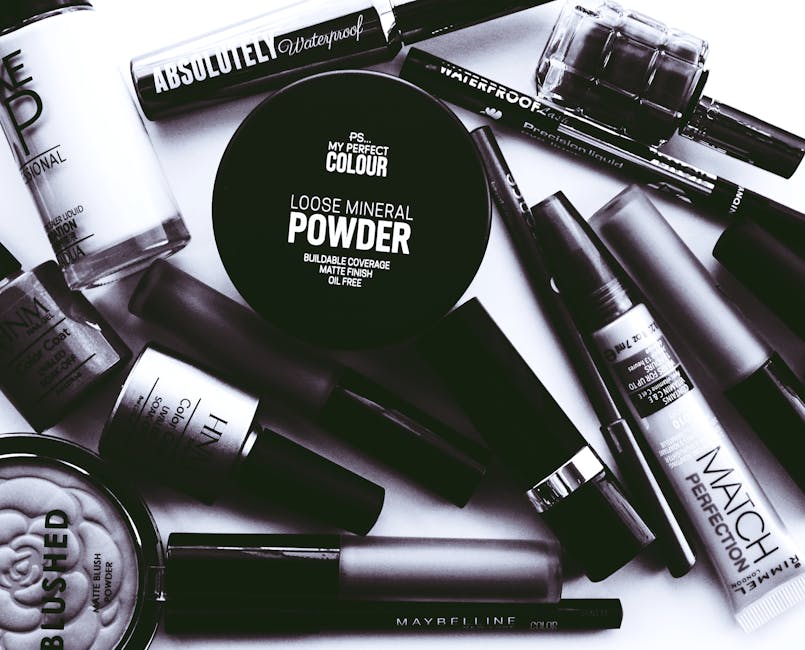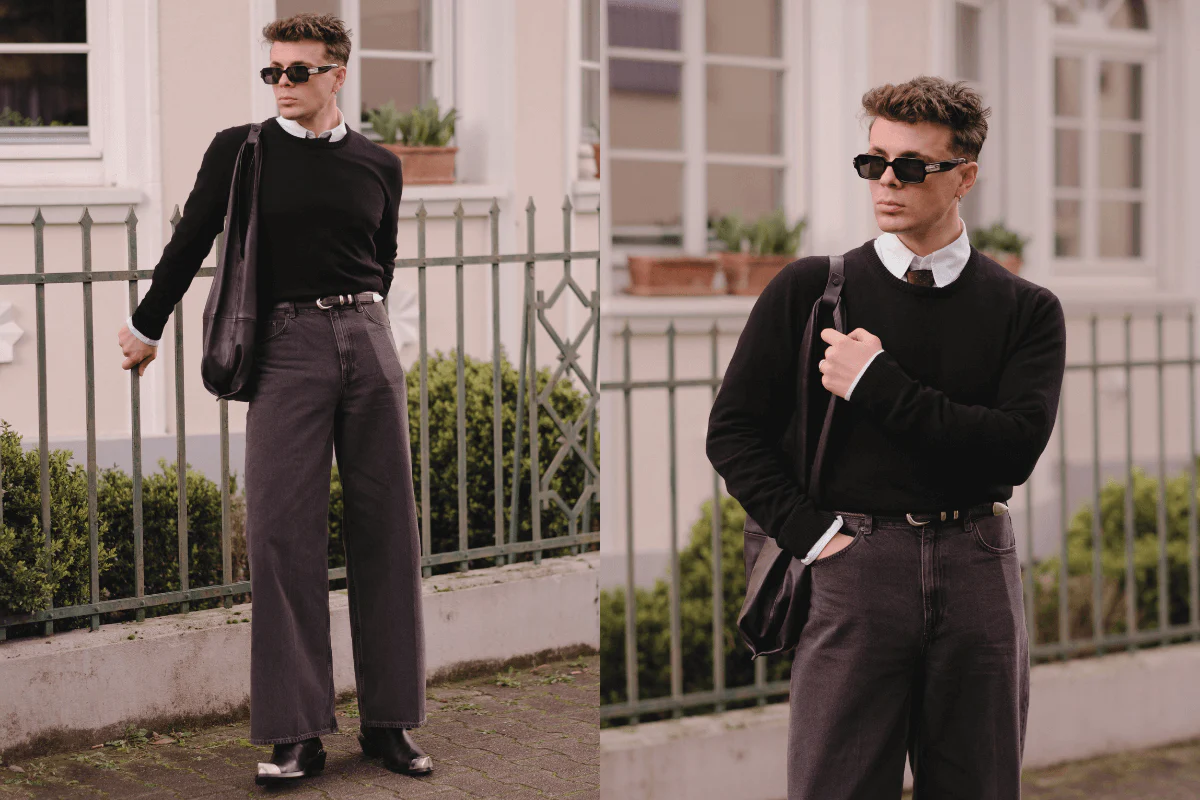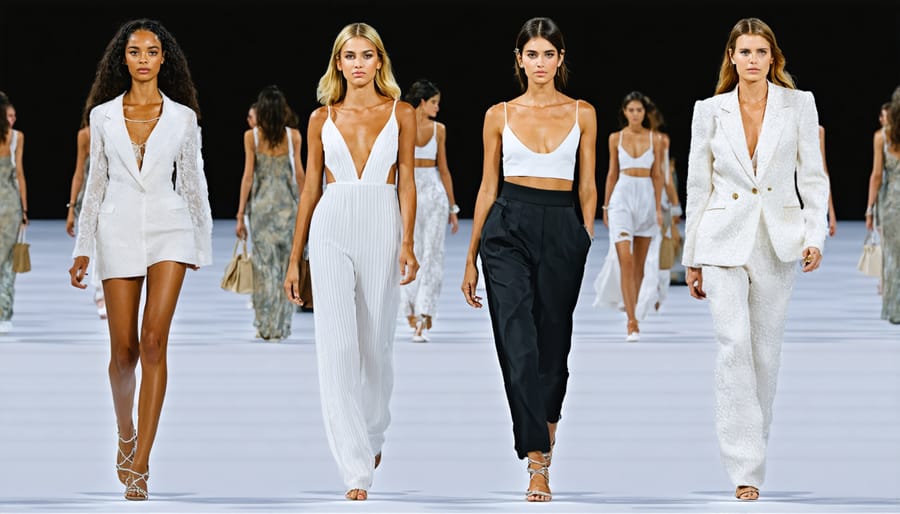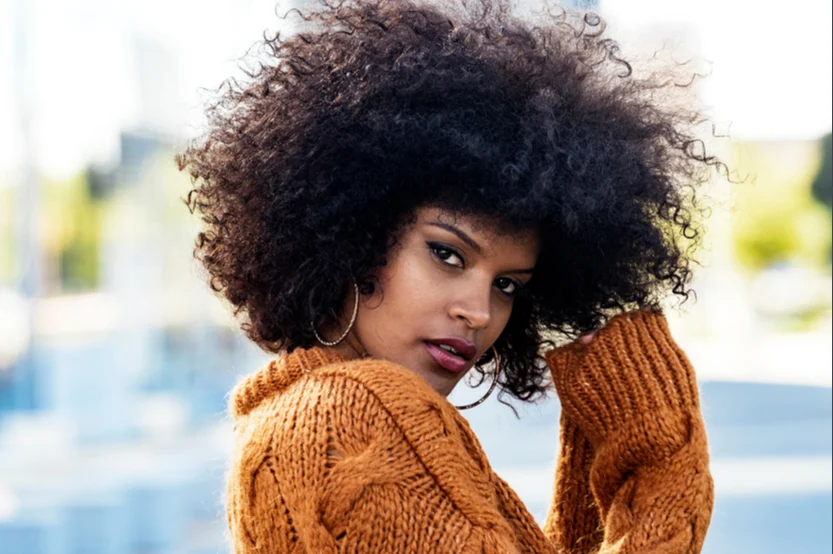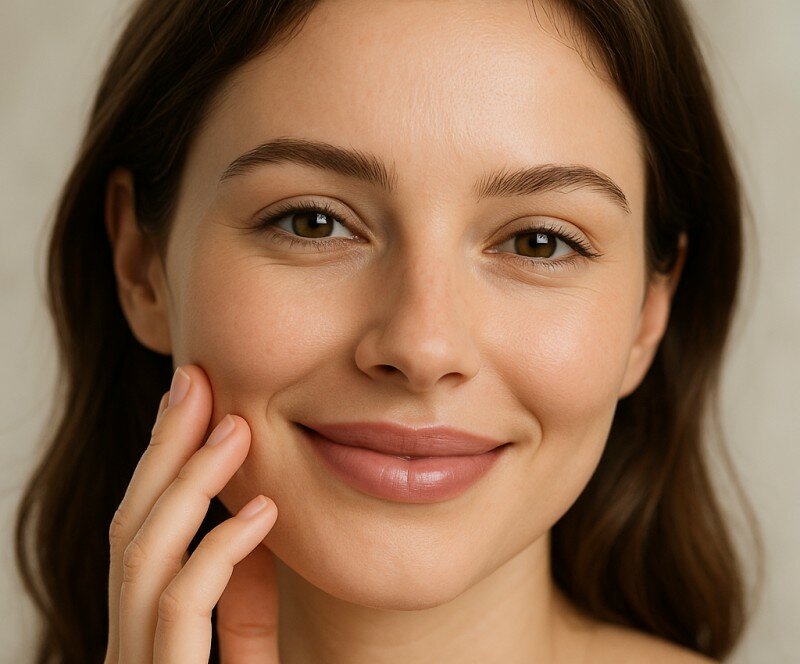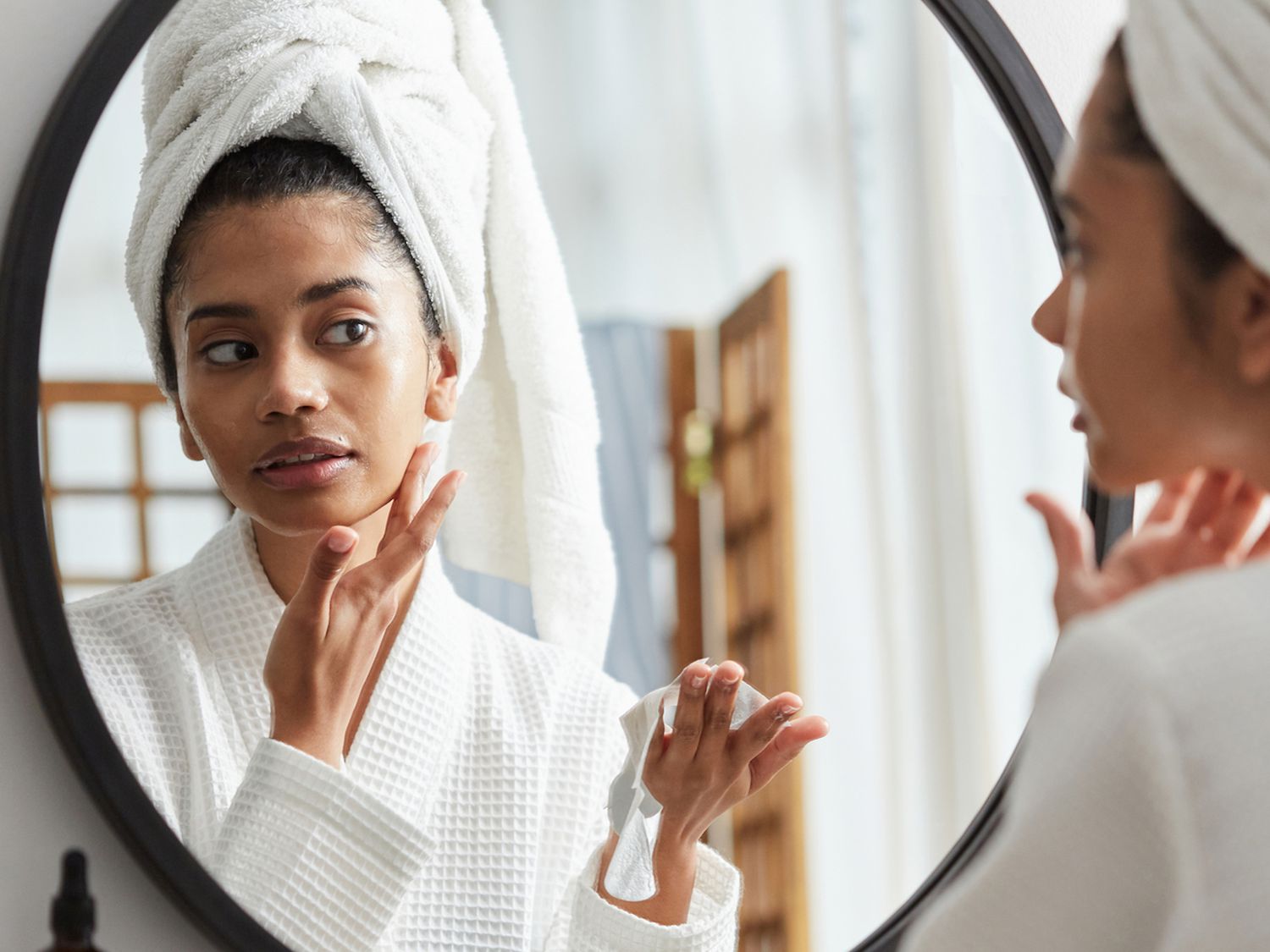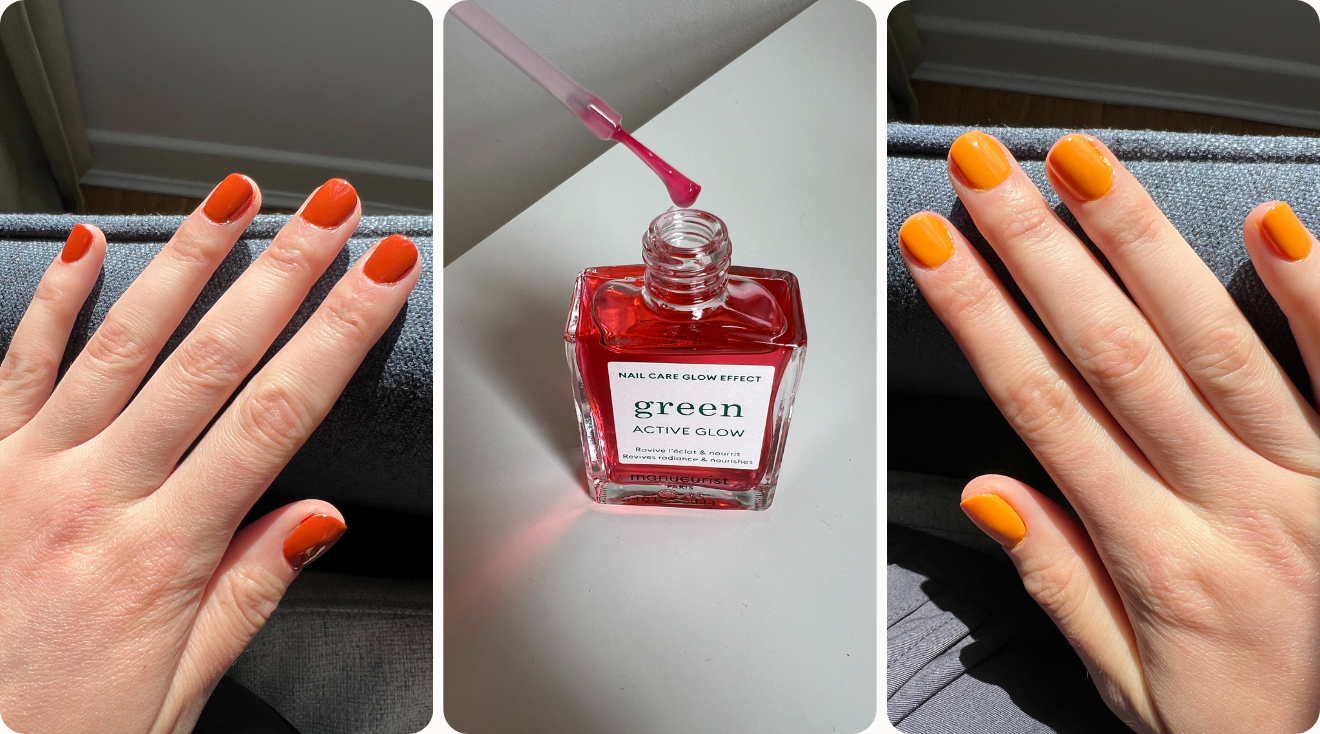The Ethical Beauty Revolution
Cruelty free makeup refers to cosmetic products that have not been tested on animals at any stage of product development. If you’re looking for trusted cruelty-free makeup brands, here are the top options certified by major organizations:
| Certification | Top Brands | Price Range |
|---|---|---|
| Leaping Bunny | Hourglass, Urban Decay, Tarte | $15-60 |
| PETA Certified | e.l.f., NYX, Milani, Too Faced | $5-45 |
| Choose Cruelty-Free | Zuzu Luxe, Pacifica, 100% Pure | $10-50 |
The beauty industry is at a crossroads. With over 2,300 Leaping Bunny certified brands worldwide as of 2024, the shift toward ethical beauty is more than just a trend—it’s becoming the new standard.
Since 1996, the Leaping Bunny Program has connected compassionate consumers with companies that refuse to conduct animal testing. This movement reflects a fundamental change in how we define beauty: not just looking good, but feeling good about the products we use.
“By choosing ethically sourced organic beauty products, you’re casting a vote for a world where beauty is synonymous with kindness, fairness, and sustainability,” notes a prominent industry expert.
The good news? You don’t need to sacrifice quality or effectiveness when choosing cruelty-free. Today’s alternatives to animal testing are not only more humane but often more accurate at predicting human reactions than traditional methods.
Whether you’re just starting your cruelty-free journey or looking to expand your collection, this guide will help you steer certifications, identify truly ethical brands, and find products that align with your values—without compromising on performance.

Understanding Cruelty-Free Makeup 101
Let’s talk about what cruelty free makeup really means. In its simplest form, it refers to beauty products that haven’t been tested on animals at any stage – not the finished lipstick, not the individual ingredients, not the formula being developed in the lab. Nothing.
What happens during animal testing isn’t pretty. Animals like rabbits, mice, rats, and guinea pigs (and sometimes even beagles, cats, and primates) endure painful procedures. They might have substances forced down their throats, chemicals dripped into their eyes, or materials injected under their skin. Many of these gentle creatures don’t survive these tests, and those that do often experience significant suffering.
“Animal testing is the beauty industry’s dirty secret,” explains one advocate I spoke with. “Most consumers would be horrified if they saw what happens to these animals in the name of mascara or foundation.”
The good news? The world is waking up. The European Union banned cosmetic animal testing back in 2013, with India following suit in 2014 and Australia in 2019. Several U.S. states including California, Nevada, and Illinois have passed their own bans. Even China, long known for requiring animal testing on imported cosmetics, has started relaxing these requirements since 2021.
This progress reflects growing consumer demand. Research shows that younger shoppers, especially Gen Z and Millennials, are driving this ethical revolution. Many are willing to pay more for products that align with their values – and brands are listening.
Cruelty Free Makeup vs Vegan
Here’s where things can get confusing – cruelty free and “vegan” aren’t the same thing:
Cruelty free means no animal testing, while vegan means no animal-derived ingredients.
You can absolutely have one without the other. That gorgeous cruelty free makeup palette might contain beeswax or carmine (a red pigment made from beetles), making it non-vegan. Meanwhile, a vegan lipstick might be made without animal ingredients but still tested on animals.
Common animal ingredients to watch for include beeswax in lip products, lanolin from sheep’s wool in moisturizers, carmine for red pigments, squalene traditionally from shark liver, and collagen from animal tissues.
As one colorful beauty blogger puts it: “Animal ingredients are not only cruel but they’re NASTY! Beeswax and honey are basically bee barf, lanolin is wool grease, and carmine is literally crushed beetles!”
Cruelty Free Makeup vs “Not Tested on Animals”
Be careful with those pretty packages claiming to be “against animal testing” or “not tested on animals.” The beauty industry has gotten clever with wording that sounds compassionate but might not tell the whole story.
A brand might say their finished lipstick wasn’t tested on animals – but what about the red dye inside it? Or they might hire a third party to do testing for them. Some brands even use these phrases while still selling in markets that require animal testing by law.
For makeup to be truly cruelty free, it needs to check all these boxes:
- No animal testing on the products you buy
- No animal testing on the ingredients inside
- No paying someone else to do animal testing
- No selling in places that require animal testing (unless through special exemption programs)
This is exactly why third-party certifications matter so much. They help us see past clever marketing to find genuinely cruelty-free options that align with our values.
The beauty industry is evolving, with alternative testing methods like lab-grown skin tissues and computer modeling proving not just more humane but often more accurate at predicting human reactions. With consumer demand for cruelty free makeup continuing to grow, these innovations are becoming the new gold standard.
Spotting Authentic Certifications & Labels

Walking down the beauty aisle can feel like navigating a sea of bunny logos and eco-friendly claims. But not all cute rabbit symbols are created equal! When you’re serious about finding genuine cruelty free makeup, knowing which certifications actually mean something makes all the difference.
Leaping Bunny
Think of Leaping Bunny as the strict parent of cruelty-free certifications. Run by the Coalition for Consumer Information on Cosmetics (CCIC), this program doesn’t mess around. Brands can’t just sign a paper and call it a day – they need to prove their commitment at every level.
To earn that little jumping bunny logo, companies must completely ban animal testing throughout their entire operation. They also need to keep tabs on their suppliers (because what good is being cruelty-free if your ingredients aren’t?), open their doors to independent auditors, and renew their pledge every single year.
What makes Leaping Bunny special is this supply chain scrutiny. They’re essentially saying, “It’s not enough that you don’t test on animals – we need to make sure nobody you work with does either.” That’s dedication!
PETA’s Beauty Without Bunnies
PETA’s program takes a slightly different approach but still keeps furry friends protected. Companies join by signing a statement promising they don’t conduct, commission, or pay for any animal testing – whether it’s for ingredients, formulations, or the finished product.
What’s super helpful about PETA’s approach is their comprehensive database. They don’t just tell you who’s being kind to animals – they also maintain lists of companies that unfortunately still test on animals, those actively working to change regulations, and brands that are both cruelty-free AND vegan.
Curious about your favorite lipstick or mascara? Pop over to PETA’s Beauty Without Bunnies database where you can search by product type or region. It’s like having a cruelty-free detective in your pocket!
Choose Cruelty-Free (CCF)
Our friends down under have their own certification system with Choose Cruelty-Free. This Australian organization has similar requirements to the others but adds a specific cut-off date for ingredient testing.
To earn CCF’s approval, brands must show that neither they nor any related companies test on animals. They can’t hire someone else to do their dirty work either – no third-party testing allowed. And importantly, none of their ingredients can have been tested on animals after their established cut-off date.
| Certification | Testing Requirements | Supply Chain Monitoring | Auditing | Renewal Process |
|---|---|---|---|---|
| Leaping Bunny | No animal testing at any stage | Required | Independent audits | Annual recommitment |
| PETA | No animal testing on ingredients or final products | Statement of assurance | Self-reporting | Update as needed |
| Choose Cruelty-Free | No animal testing with cut-off date | Required | Self-reporting with verification | Every 3 years |
How to Verify a Brand in Seconds
You don’t need to become a full-time researcher to shop ethically! Here’s how to quickly check if that pretty palette is truly cruelty free:
Mobile apps make verification a breeze. Both Leaping Bunny and PETA offer free apps where you can simply scan product barcodes right in the store. Beep! Instant knowledge about whether that mascara passed the kindness test.
Bookmark official databases on your phone for quick reference while shopping. Think of them as your ethical shopping assistants, always ready with the facts.
Trust the logos – but only the real ones! Once you know what authentic certification symbols look like (the table above helps!), spotting them on packaging gives you immediate peace of mind.
Read between the lines of company statements. A truly cruelty-free brand will have clear, specific language about their animal testing policy. Be suspicious of vague phrases like “finished product not tested on animals” – this often means ingredients might still have been tested on our furry friends.
Ask the China question. Since China traditionally required animal testing for imported cosmetics, brands selling there often couldn’t claim to be truly cruelty-free. However, things are changing! Some brands now participate in Leaping Bunny’s China Qualification Program, which allows them to maintain their cruelty-free status while selling in the Chinese market through special exemption programs.
“But how do I know these companies are telling the truth?” It’s a fair question! This is exactly why these certification programs exist – they require brands to provide documentation, open their supply chains to examination, and make formal commitments that put their reputation on the line. While no system is perfect, these certifications provide the best assurance we have that our beauty routines aren’t causing harm.
Every time you choose cruelty free makeup, you’re casting a vote for a kinder beauty industry – and your choices really do make a difference!
5 Stand-Out Categories of Cruelty-Free Makeup Brands
The world of cruelty free makeup has exploded with options that cater to every preference, need, and budget. Gone are the days when choosing ethical beauty meant sacrificing quality or breaking the bank. Let’s explore five distinct categories that showcase the amazing diversity in today’s cruelty-free beauty landscape.
Budget-Friendly Heroes Under $15
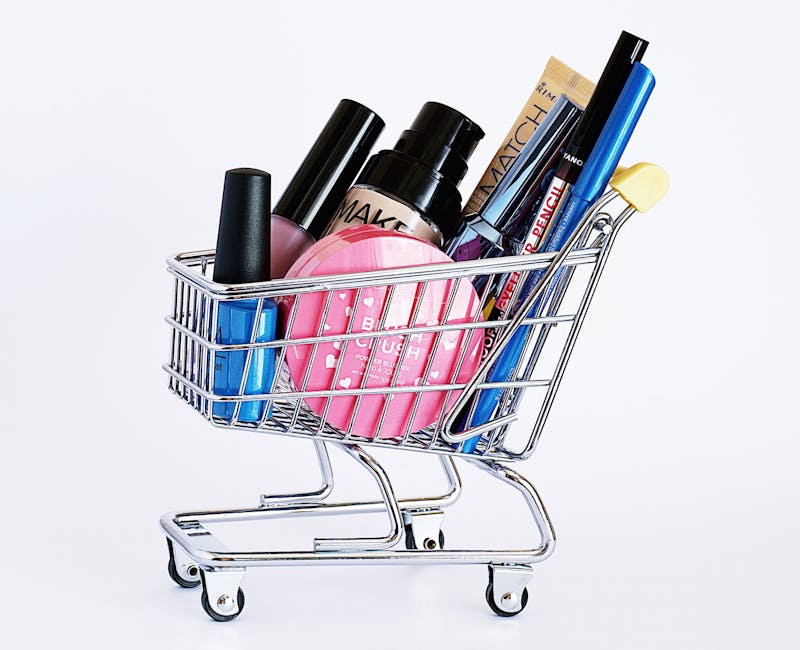
Who says being kind to animals has to be expensive? These wallet-friendly brands prove that compassion can be incredibly affordable:
e.l.f. Cosmetics has revolutionized budget beauty with their $3-$15 price range. As one Reddit user put it, “E.L.F. is underrated, very affordable, and high-quality.” Their Poreless Putty Primer ($9) rivals products triple its price, while their PETA-certified, 100% vegan line makes ethical beauty accessible to everyone.
NYX Professional Makeup has built a devoted following with their $5-$25 range. Their Epic Ink Vegan Waterproof Liquid Eyeliner ($9) boasts an impressive 4.2 stars from nearly 5,000 reviews. NYX proves that drugstore pricing doesn’t mean compromising on staying power or pigmentation.
I personally adore Milani’s Baked Blush ($9), which gives my cheeks a natural flush that lasts all day. Their Leaping Bunny certification means you can trust their commitment to kindness, while their Conceal + Perfect 2-in-1 Foundation + Concealer ($11) has become a holy grail product for many.
For trend-followers on a budget, ColourPop delivers with their constant stream of new releases priced between $6-$20. Their Super Shock Shadows ($7) created an entirely new texture category in the industry, with a bouncy formula that applies like a dream.
And let’s not forget Wet n Wild, where prices start at just $1! Their MegaGlo Highlighting Powder ($5) creates a glow that rivals luxury brands, making ethical beauty truly accessible to anyone.
Mid-Range Icons Worth the Hype
When you’re ready to invest a bit more, these mid-range brands deliver professional quality that’s worth every penny:
Urban Decay changed the game with their Naked palettes ($54), creating neutral eyeshadow collections that became industry standards. Their All Nighter Setting Spray ($33) has achieved cult status with 4.7 stars from over 7,700 reviews. With Leaping Bunny certification, they’ve proven that edgy, high-performance makeup can be completely cruelty-free.
Tarte has won hearts with their Shape Tape Concealer ($31), often described as the holy grail of concealers. One makeup artist I interviewed shared, “Tarte’s Sea Breezy Cream Bronzer and Amazonian Clay Foundation are staples in my cruelty-free routine.” Their natural-focused formulations deliver results while maintaining PETA certification.
With its playful packaging and serious performance, Too Faced makes ethical beauty fun. Their Better Than Sex Mascara ($28) has achieved iconic status, while their Chocolate Soleil Matte Bronzer ($34) actually smells like cocoa. As one Reddit user noted, “Too Faced packaging is cute and the brand is cruelty-free” – the perfect combination of style and substance.
Anastasia Beverly Hills revolutionized how we think about brows with products like Brow Wiz ($25). They’ve since expanded into full color cosmetics, with their Soft Glam Eyeshadow Palette ($45) becoming a staple for makeup enthusiasts who care about animal welfare.
For a touch of sophistication, Hourglass combines luxury aesthetics with Leaping Bunny certification. Their Ambient Lighting Blush ($43) creates the most flattering glow, while their Scattered Light Glitter Eye Shadow ($30) delivers grown-up sparkle without a hint of childishness.
Luxury Splurges for Conscious Glam
Sometimes, you want to treat yourself to something truly special – and these high-end cruelty free makeup brands deliver indulgence without ethical compromise:
Charlotte Tilbury brings red-carpet glamour to cruelty-free beauty. Their Pillow Talk lipstick ($37) has become so popular that one sells every two minutes worldwide. With PETA certification and sumptuous packaging, this brand proves that luxury and ethics can beautifully coexist.
Kosas takes a skin-first approach to makeup, with formulations that actually improve your complexion over time. Their Tinted Face Oil ($42) feels like skincare but performs like foundation, with 86% of clinical study participants noticing more nourished skin after just a month of use.
For those drawn to the mystical side of beauty, Rituel de Fille creates “makeup that feels like a ritual.” Their Inner Glow Creme Pigment ($29) can be used on cheeks, lips, and eyes, embodying the brand’s waste-conscious approach to formulation. Their Leaping Bunny certification ensures their magical products don’t come with an ethical dark side.
Legendary makeup artist Pat McGrath brings her runway expertise to her own line, where Mothership Eyeshadow Palettes ($125) deliver textures and pigments unlike anything else on the market. Despite the luxury positioning, the brand maintains PETA certification, proving that world-class artistry doesn’t require animal testing.
Westman Atelier, created by celebrity makeup artist Gunn Westman, combines clean ingredients with minimalist packaging and maximum performance. Their Vital Skin Foundation Stick ($68) and Baby Cheeks Blush Stick ($48) create the most natural, skin-like finish while adhering to PETA’s cruelty-free standards.
100% Vegan Lines for Plant-Based Purists
For those avoiding all animal-derived ingredients, these fully vegan brands deliver performance without compromise:
KVD Vegan Beauty proves that vegan formulations can be bold and long-lasting. Their Tattoo Liner ($22) has achieved legendary status, with one PETA beauty guide raving it’s “drop-dead gorgeous and smudge-proof.” Their Leaping Bunny certification and commitment to 100% vegan formulations make them a standout in ethical beauty.
Milk Makeup combines clean ingredients with cool, minimalist aesthetics. Their Hydro Grip Primer ($36) creates the perfect canvas for makeup, while their KUSH High Volume Mascara ($25) proves that you don’t need beeswax for amazing lash volume. Their innovative, stick-based formats also reduce packaging waste.
Cover FX built their reputation on inclusive shade ranges and performance-driven formulas. Their Custom Improver Drops ($42) created an entirely new category of customizable illumination, while their commitment to vegan formulations ensures that no animals are harmed in the creation of their extensive shade ranges.
For affordable vegan options, Pacifica delivers dreamy packaging and natural ingredients at prices between $10-$25. Their Complex Lip Balm ($12) nourishes without beeswax, while their Alight Clean Foundation ($16) provides beautiful coverage at a price point that won’t break the bank.
Inika Organic takes clean beauty to the next level by combining organic certification with vegan formulations. Their Certified Organic BB Cream ($45) and Mineral Foundation Powder ($40) deliver flawless results while adhering to the strictest ethical standards in the industry.
Zero-Waste & Refillable Champions
The newest frontier in cruelty free makeup combines animal kindness with planet kindness through innovative packaging solutions:
Kjaer Weis pioneered luxury refillable packaging with their weighty metal compacts designed to last a lifetime. While the initial investment is higher – Cream Blush is $56 – refills cost significantly less at $32, saving both money and packaging waste over time. Their PETA certification ensures their sustainability efforts extend to animal welfare as well.
Elate Cosmetics creates beautiful bamboo packaging with magnetic refill pans. Their Pressed Cheek Color ($29, $16 refill) and Create Pressed Eyecolor ($19, $12 refill) come in sustainable packaging that’s actually designed to be displayed on your vanity. Their Leaping Bunny certification and 100% vegan formulations make them a triple threat of ethics.
Zao Organic Makeup takes an innovative approach to refills, with bamboo cases and cotton pouches replacing traditional cardboard packaging. As one industry report noted, “ZAO’s innovative refill system covers 80% of products to reduce waste.” Their Choose Cruelty-Free certification ensures their environmental efforts are matched by animal welfare commitments.
Alima Pure takes sustainability seriously with carbon-neutral shipping and minimalist, refillable packaging. Their Satin Matte Foundation ($28, $22 refill) delivers flawless coverage with none of the guilt associated with disposable packaging. Their Leaping Bunny certification completes their impressive ethical credentials.
Axiology has completely reimagined lipstick packaging with their innovative “Balmies” ($14), which come wrapped in recycled paper instead of plastic tubes. Their 3-in-1 Lip-to-Lid Balmies ($36) can be used on cheeks, lips, and eyes, reducing the number of products needed in your makeup bag. Their Leaping Bunny certification and 100% vegan formulations make them true pioneers in ethical beauty.
The beauty of today’s cruelty free makeup landscape is that you don’t have to choose between your values and your beauty needs. Whether you’re shopping on a tight budget or ready to splurge, there are options that align with your ethics while delivering the performance you deserve.
Transitioning Your Makeup Bag the Cruelty-Free Way

Making the switch to cruelty free makeup doesn’t have to happen overnight. In fact, a gradual, thoughtful transition is often more sustainable both for your wallet and the planet. Think of it as a beauty journey rather than an immediate makeover.
Start by taking inventory of what you already own. Grab a cup of tea, spread out your collection on the bathroom counter, and check which products are already cruelty-free. Many of us are pleasantly surprised to find we’re already partway there!
“When I first checked my makeup bag, I realized about 30% of my products were already cruelty-free without me even trying,” shares Mia, one of our community members. “It made the transition feel much more manageable.”
Before your non-cruelty-free favorites run out, do a little homework. Research alternatives that match your needs in terms of shade, formula, and price point. Beauty forums, YouTube reviews, and our resources here at Beyond Beauty Lab can help you find your perfect match. Keeping a notes app list of “to try next” products makes shopping much easier when the time comes.
Instead of tossing everything at once (hello, unnecessary waste!), adopt the “one-in, one-out” approach. As your mascara dries up or your foundation runs low, replace it with a cruelty-free alternative. This method spreads out the cost of transitioning and ensures you’re not wasting perfectly good products.
Focus first on your everyday essentials – the foundation you wear Monday through Friday, your can’t-leave-home-without-it mascara, or that lip color that makes you feel put together in seconds. These high-use items will make the biggest impact in your cruelty-free journey.
For products you’re less excited about but don’t want to waste, consider “Project Pan” – the practice of committing to completely finish a product before replacing it. It’s surprisingly satisfying to see the bottom of that eyeshadow pan after months of dedicated use!
“I set myself a six-month timeline to transition completely,” explains Jordan, another reader. “By focusing on one category at a time – first base products, then eye makeup, then lips – the process felt organized rather than overwhelming.”
If you have gently used products you know you won’t finish, consider donating them. Many women’s shelters accept unopened or lightly used cosmetics, giving your products new life while supporting those in need. Just be sure to sanitize items appropriately before donating.
Ready to make your commitment official? Consider taking the Pledge to Be Cruelty-Free. Having a public commitment can provide that extra motivation on days when the limited-edition release from a non-cruelty-free brand is calling your name.
Common Animal-Derived Ingredients to Avoid
If you’re aiming to go both cruelty-free and vegan with your makeup collection, you’ll want to become familiar with some sneaky animal-derived ingredients that often fly under the radar.
Carmine might sound innocent enough, but this red pigment (sometimes listed as CI 75470, cochineal extract, or natural red 4) comes from crushed beetles. Yes, actual insects! It’s commonly found in red lipsticks, blushes, and eyeshadows. The next time you admire that perfect red lip color, check the ingredient list first.
Tallow (or sodium tallowate) is essentially rendered animal fat, often found creating that creamy texture in foundations and lipsticks. Plant oils can achieve the same results without the animal source.
That luxurious squalene in your fancy face oil? Traditional sources come from shark liver, though thankfully many brands now use plant-derived versions from olives or sugarcane. When shopping, look specifically for “vegetable squalane” or “olive-derived squalane” to be sure.
Collagen has become a buzzword in anti-aging products, but it’s typically sourced from animal tissues. The good news is that plant-based and lab-created alternatives are becoming increasingly common and effective.
Lanolin, a waxy substance secreted by wool-bearing animals, creates that balmy texture in many lip products. While sheep aren’t harmed in the collection process, the wool industry itself has ethical concerns that many vegan consumers prefer to avoid.
Beeswax (cera alba) is probably the most common animal-derived ingredient you’ll encounter. This natural thickener appears in countless lip products, mascaras, and creams. Candelilla wax and plant-based alternatives provide similar benefits for those seeking vegan options.
“I was shocked to learn about guanine,” shares Taylor, a longtime vegan makeup enthusiast. “That shimmery effect in my favorite eyeshadow? Fish scales! Once you know what to look for, it’s easier to avoid these ingredients.”
Other sneaky ingredients include allantoin (often from cow urine, though plant versions exist) and elastin (from animal neck ligaments, used in anti-aging products).
One common point of confusion: some labels say “no animal ingredients” but still contain beeswax or lanolin. This happens because some companies don’t consider these “animal ingredients” since they don’t require slaughtering animals. For truly vegan products, look for explicit “vegan” labeling or certification.
Are Cruelty-Free Products as Safe & Effective?
Let’s bust a persistent myth right now: cruelty free makeup is every bit as safe and effective as conventionally tested products – and in many cases, the testing methods are actually more scientifically relevant.
Modern in-vitro testing uses human cell cultures to evaluate how ingredients interact with our bodies. Unlike animal tests, these methods use actual human cells, providing more accurate and relevant safety data. It’s not just more humane – it’s better science.
“The irony is that animal testing is often less predictive of human reactions than these newer methods,” explains Dr. Melissa Chen, a dermatologist specializing in sensitive skin. “Rabbits’ eyes and skin react differently than humans’, so those traditional tests could actually be less reliable.”
Advanced computer modeling can now predict how ingredients will interact with human systems with remarkable accuracy. These sophisticated programs analyze molecular structures and compare them to thousands of known compounds, identifying potential irritants without a single animal involved.
Ethical human volunteer studies use patch tests and other non-invasive methods to provide direct data on real human reactions. These controlled studies give formulators immediate, relevant feedback without causing harm.
Perhaps most importantly, the beauty industry already has thousands of ingredients with established safety records. These “tried and true” components don’t require new testing at all – we already know they work well and are safe for human use.
The proof is in the performance. Just look at the stellar reviews for cruelty free makeup products like Urban Decay’s All Nighter Setting Spray (4.7 stars from over 7,700 reviews) or NYX’s Epic Ink Liner (4.2 stars from nearly 5,000 reviews). These products aren’t just “good for being cruelty-free” – they’re excellent by any standard.
“I switched to exclusively cruelty-free products five years ago,” shares makeup artist Valerie James. “Not once have I had to compromise on performance. If anything, I’ve finded formulations that outperform what I was using before.”
Interestingly, many dermatologists now specifically recommend cruelty free makeup brands for patients with sensitive skin. These formulations often avoid harsh irritants and focus on skin-compatible ingredients that nourish while they beautify.
As consumers continue demanding both performance and ethics, brands are rising to the challenge with innovative formulations that prove kindness and quality can absolutely go hand in hand.
Frequently Asked Questions about Cruelty-Free Makeup
Does “sold in China” always mean animal testing?
If you’ve been exploring cruelty free makeup, you’ve probably come across warnings about brands that sell in China. The good news is that “sold in China” no longer automatically means animal testing is happening.
For years, China required mandatory animal testing for all imported cosmetics, which meant brands had to choose between the Chinese market or their cruelty-free status. But things have changed! Since 2021, general cosmetics (think everyday items like lipstick and mascara) can avoid animal testing under certain conditions.
Chinese domestic brands have already been enjoying this flexibility for a while, and now foreign brands have options too. Plus, if a brand sells exclusively through cross-border e-commerce platforms, they can bypass testing requirements altogether.
The Leaping Bunny Program has been especially proactive here, creating their China Qualification Program to help brands steer these complex regulations while maintaining their cruelty-free commitments. If your favorite brand sells in China, don’t immediately write them off – check if they’re part of this program or if they’re using the e-commerce loophole to stay truly cruelty-free.
How often are certification lists updated?
When you’re relying on certification lists to guide your cruelty free makeup choices, freshness matters! Thankfully, these organizations keep their information current:
Leaping Bunny doesn’t just certify brands once and forget about them. They require annual recommitment from every company and conduct periodic audits to ensure continued compliance. It’s like a yearly renewal of their cruelty-free vows!
PETA updates their Beauty Without Bunnies database regularly as new companies apply and meet their standards. Their process is ongoing, with new brands added as soon as they’re verified.
Choose Cruelty-Free maintains their list with regular updates when brands apply and pass their verification process. Their focus on Australian and New Zealand brands provides specialized regional guidance.
For the absolute latest information, I recommend going straight to the certification websites or downloading their mobile apps. The Ethical Pixie list is another fantastic resource – as of January 2024, it includes over 500 thoroughly vetted brands that have been carefully researched for their animal testing policies.
What if my favorite brand isn’t cruelty-free?
It can be heartbreaking to find that a product you’ve loved for years comes from a brand that tests on animals. I’ve been there! But don’t despair – you have several thoughtful options:
Speak up! Brands care what their customers think, so send them an email or message on social media expressing your disappointment and asking them to reconsider their testing policies. Consumer voices have successfully influenced many brands to make the switch to cruelty-free methods.
The beauty world is full of “dupes” – products that look, feel, and perform almost identically to popular items but come from cruelty free makeup brands. Websites like Cruelty-Free Kitty and Logical Harmony are treasure troves of dupe recommendations that can help you find ethical alternatives to your favorites.
Some cruelty-free brands are owned by parent companies that continue animal testing for other brands in their portfolio. While opinions differ on this, some advocates believe supporting the cruelty-free brands within these companies encourages more investment in ethical practices across the entire corporation.
Going cruelty-free is a journey, not an overnight change. Use up what you have while researching alternatives – this approach is both economical and reduces waste.
As one passionate Reddit user advises: “Choose cruelty-free, ask your favourite brands to stop testing until they can participate in the auditing scheme.” Your voice and your purchasing power really do make a difference in creating a more compassionate beauty industry.
Conclusion

Embracing cruelty free makeup isn’t about overnight perfection—it’s about progress. Like any meaningful journey, it happens one step (and one product) at a time. The good news? You’re not alone on this path.
As we’ve finded together throughout this guide, ethical beauty has blossomed into something truly spectacular. From $5 drugstore gems that perform like champions to luxurious splurges that make special occasions even more magical—compassionate beauty now exists at every price point imaginable.
“I used to think going cruelty-free meant sacrificing quality or paying premium prices,” shares one of our community members. “Now my makeup collection performs better than ever, and I sleep better at night knowing my beauty routine aligns with my values.”
What’s particularly exciting is how your individual choices create ripples of change throughout the entire beauty industry. Each time you choose a cruelty free makeup product, you’re essentially casting a vote for the kind of world you want to live in—one where beauty doesn’t come at the expense of animal suffering.
The beauty industry notices these choices. When enough consumers shift their spending toward ethical options, even the largest corporations eventually follow suit. Your purchasing power matters more than you might realize!
For those just starting out, perfection isn’t the goal. Maybe you begin by swapping out your daily essentials—foundation, mascara, and lipstick—before tackling those specialty products you use less frequently. The important thing is simply to begin.
At Beyond Beauty Lab, we believe true beauty radiates from both what we put on our faces and the choices behind those products. We’re committed to walking alongside you with honest information, practical recommendations, and encouragement every step of the way.
Want to continue expanding your ethical beauty knowledge? Our Clean-Beauty Vault offers regularly updated resources on cruelty-free brands, ingredient deep-dives, and practical tips for building a compassionate beauty routine you’ll love.
As one of our favorite beauty philosophers puts it: “The most beautiful makeup is the makeup that allows you to feel beautiful while knowing no creature suffered for your glow.” We couldn’t agree more.
Your journey toward cruelty free makeup matters—not just for the animals, but for pushing the entire industry toward a more compassionate future. One lipstick, one foundation, one conscious choice at a time, you’re helping transform beauty from the inside out.

